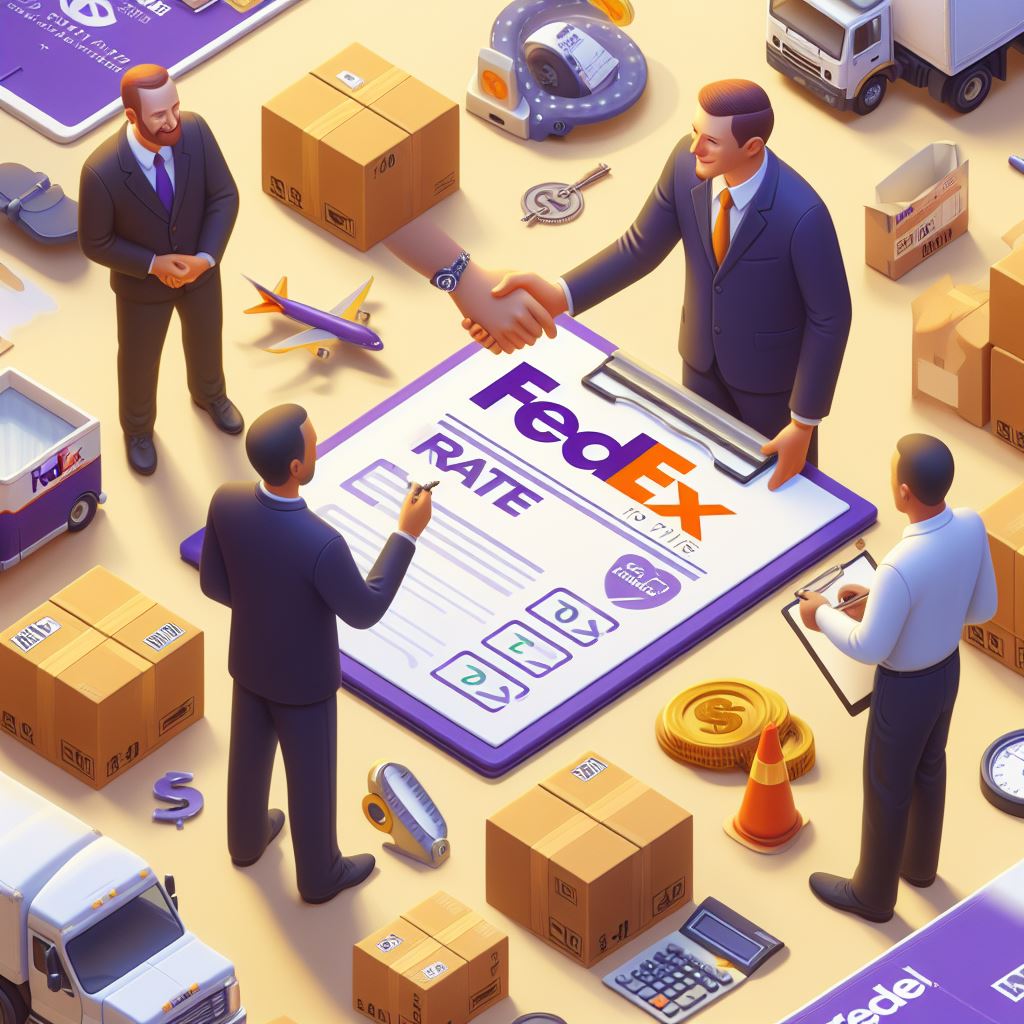In the intricate world of business, where margins can be razor-thin, the ability to negotiate effectively can be the difference between profit and loss. One area often overlooked, yet ripe for savings, is shipping rates. FedEx, as a global shipping giant, offers a myriad of services, each with its own pricing structure. But did you know these rates are negotiable? For first-time negotiators, this might seem like uncharted territory. This guide aims to be your compass, navigating you through the nuances of FedEx rate negotiations.
Understanding FedEx’s Rate Structure
FedEx’s rate structure is multifaceted, and a deep understanding is your first step in negotiation.
- Weight classes: Every package, based on its weight, falls into a specific class. For instance, a lightweight document has a different rate than a heavy machinery part. By analyzing your shipping patterns, you can identify which weight classes are most relevant to your business and focus your negotiation efforts there.
- Zones: Shipping zones are geographical areas that FedEx uses to determine shipping costs. If your business frequently ships coast-to-coast, you’re likely paying higher zone rates than if you’re shipping locally. Recognizing your most common zones can guide your negotiation strategy.
- Fuel surcharges: The volatile nature of fuel prices means that FedEx, like other carriers, imposes fuel surcharges. However, with the right negotiation tactics, you might secure a fixed surcharge rate or even a temporary waiver during promotional periods.
- Accessorials: These are the “extras” on top of the base rate. Need a signature on delivery? That’s an accessorial. Require temperature-controlled shipping? Another accessorial. Each comes with its fee, but with effective negotiation, you can often reduce or eliminate these charges.
Preparing for Negotiation
- Data Collection:
Data is the new money in the digital era. By analyzing your past shipping data, you can identify trends, peak shipping times, and more. Betachon’s analytical reports can be a goldmine, offering insights that can be your ace in negotiations. - Setting Clear Objectives:
Imagine going into a battle without a plan. That’s what negotiation without clear objectives feels like. Whether it’s a 10% rate reduction or free weekend deliveries, set clear, achievable goals before you start. - Researching the Market:
In the world of business, knowledge is leverage. Are businesses of your size and scale getting better rates? Are there industry-specific discounts you’re unaware of? A thorough market research can give you the upper hand in negotiations.
The Negotiation Process
- Starting the Conversation:
Your relationship with FedEx shouldn’t be purely transactional. Building a rapport with your FedEx representative can open doors to discounts and offers not available to the general public. Remember, every negotiation is a conversation, not a confrontation. - Presenting Your Case:
With your data in hand, showcase your value to FedEx. If you’ve increased your shipping volume by 20% over the past year, that’s a strong case for a rate reduction. Similarly, if you’ve been a loyal FedEx customer for a decade, that loyalty should be rewarded. - Handling Counteroffers and Rejections:
Negotiations are a dance of offers and counteroffers. If FedEx counters with a rate that’s still above your target, present data-backed reasons for a further reduction. And if faced with a flat-out rejection, consider exploring other carriers. Sometimes, the mere mention of switching can lead to better offers.
Post-Negotiation Steps
- Reviewing the New Agreement:
Once you’ve shaken hands (virtually or otherwise), ensure every negotiated point is in writing. Clarity is ensured and future conflicts are avoided. - Monitoring and Compliance:
A negotiated rate is of no use if it’s not applied correctly. Regularly audit your invoices. If discrepancies arise, address them immediately. This not only ensures you’re getting the agreed rates but also strengthens your position in future negotiations.
Common Mistakes to Avoid
- Lack of Preparation: The adage “fail to prepare, prepare to fail” rings true in negotiations. Always arm yourself with data, market research, and clear objectives.
- Accepting the First Offer: FedEx, like any business, will aim to maximize its profit. Their first offer is rarely their best. Politely, but firmly, push for better terms.
- Overlooking Multi-Year Agreements: A longer commitment can often lead to better rates. If you foresee no significant changes in your shipping patterns, consider a multi-year agreement for better terms.
Conclusion
The world of FedEx rate negotiations, while intricate, is not insurmountable. With preparation, data, and a clear strategy, significant savings are within reach. Remember, every dollar saved in shipping can be reinvested in your business, fueling growth and success.
Call to Action
Harness the power of data with Betachon’s analytical tools. Strengthen your negotiation position, and watch your shipping costs plummet. Post your comments on your experiences, difficulties, and accomplishments. Together, we can demystify the world of FedEx rate negotiations.
